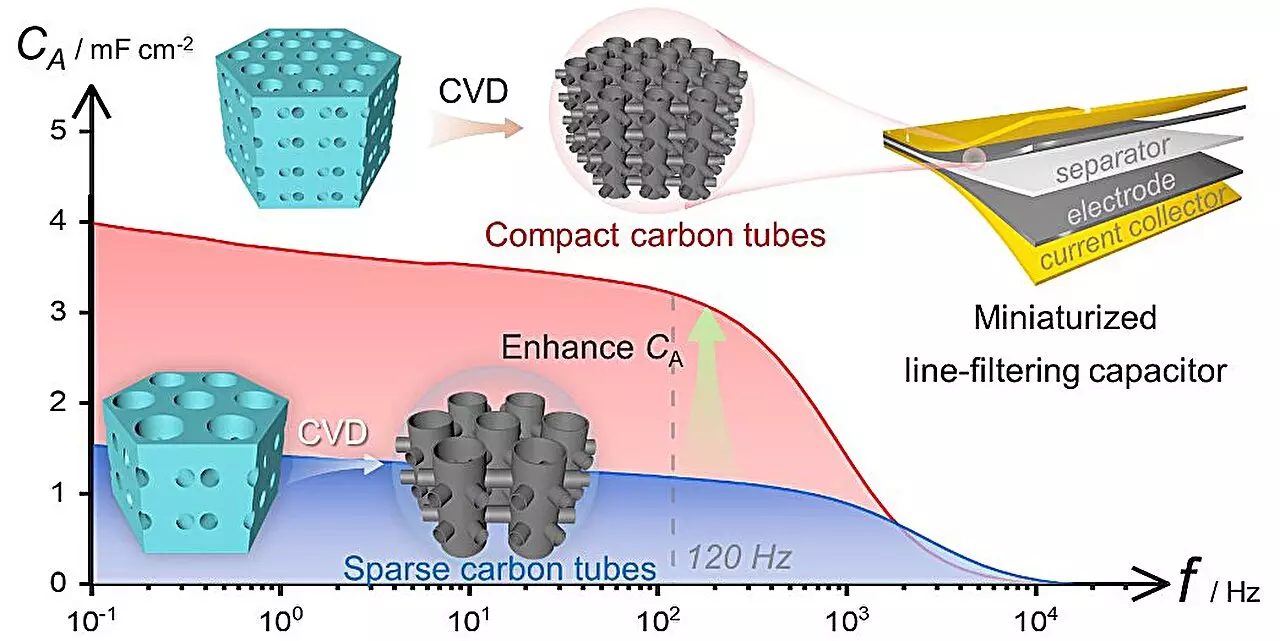The recent breakthrough by a research team in constructing high-density three-dimensional carbon tube nanoarray electrodes has opened up a new realm of possibilities in the field of filter capacitors. These capacitors play a crucial role in converting fluctuating voltage signals into steady direct current, a vital function in modern electronics. While traditional Aluminum electrolytic capacitors (AECs) are commonly used, their large size and limited capacitance have posed challenges in shrinking electronic devices. This has led researchers to explore alternative solutions such as electric double-layer capacitors (EDLCs) with higher energy density.
One of the main drawbacks of traditional carbon-based EDLCs has been their slow ion transport, hindering their ability to achieve both high energy density and quick frequency response required for efficient line-filtering. In response to this challenge, a team led by Prof. Meng Guowen and Prof. Han Fangming from the Hefei Institutes of Physical Science of the Chinese Academy of Sciences embarked on a systematic study. Their goal was to manipulate the pore structure of three-dimensional interconnected porous anodized aluminum oxide (3D-AAO) templates to create high-performance filter devices.
By fine-tuning the vertical pore diameter and inter-pore spacing of the 3D-AAO templates, the researchers were able to fabricate 3D compactly arranged carbon tube (3D-CACT) nanoarray electrodes using chemical vapor deposition. The specific surface area tests revealed that reducing both the pore diameter and inter-spacing significantly increased the electrode’s surface area, leading to enhanced performance. The resulting 3D-CACT electrode-based device exhibited exceptional frequency response characteristics, surpassing the capabilities of commercial AECs and previous EDLCs.
One of the key highlights of the research was the scalability of the approach, demonstrated by connecting multiple sets of 3D-CACT-based EDLCs in series. This not only extended the capacitors’ operating voltage but also maintained their rapid frequency response and low loss properties. In a practical demonstration, the researchers utilized the series-connected devices as filters, successfully converting various alternating current inputs into smooth direct current signals with performance comparable to commercial AECs.
The implications of this research are far-reaching, as the high-density 3D carbon tube nanoarray electrodes offer promising solutions for high-performance filter capacitors. This advancement has the potential to revolutionize miniaturized power systems and electronics, providing more efficient and compact solutions for a wide range of applications. With continued innovation and research in this field, the future of filter capacitors looks brighter than ever before.


Leave a Reply